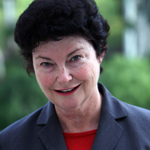Pestolesi becomes first Anteater to receive weekly honor from AVCA
Judith Treas, sociology professor, is quoted in the New York Times on August 30, 2009
UCI sociologists travel to San Francisco for annual American Sociological Association meeting to take on key leadership positions and present research findings that range from how career prioritization decisions affect men and women differently to a look at how personal networks influence drug use
UCI study to focus on relationship between education and career success for low income minorities trying to break free from poverty cycle
High-jump champ and sociology undergrad Lauren Collins ends a record-setting season on track for the Olympics
New status denotes UC system-wide recognition for research topic complementary to goals of university, says Office of Research
Cynthia Feliciano, sociology and Chicano/Latino studies assistant professor, finds people follow racial stereotypes when looking for love online
Judith Treas, sociology professor and director of UCI's Center for Demographic and Social Analysis (C-DASA), is featured in the Capital Times on April 20, 2009
Research conducted by Ruben Rumbaut, sociology professor, is featured in the New York Times on April 18, 2009. The story also appears in nine additional media sources.
Findings will lead to more accurate numbers for immigration policy developers
Book to discuss ethnicity and inequality among immigrant populations in Southern California
Sociologist studies negative economic and social consequences related to China's one-child policy
Findings indicate interracial marriage is more common among Asian/White and Latino/White couples than among Black/White couples
Researchers awarded grant from NSF to study impact of geography on social networks; findings will help them understand how physical space and closeness contribute to perceived feelings of safety and cohesiveness among neighbors based on where their networks exist - information useful to urban planners interested in developing and shaping communities to fit residents' social and interpersonal needs
















